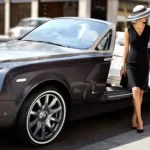For years Emily Ratajkowski has shared her image with the world. She is now ready to share her thoughts.
Robin Thicke and Pharrell Williams took part in a controversial 2013 video of their success since they took it from day to day. Blurred linesEmily Ratajkowski is very accustomed to recognizing her image in the public domain. Admittedly, the 30-year-old model has been “undeniably rewarded” for her sexuality. But today’s sex symbol has a lot of complexity, and now it’s time to look at it.
My Body, Emily Ratajkowski’s first book is a collection of 12 essays. The skin is simple; a muted pink background contains only the author’s name and the title of his work. Notably, his picture is nowhere to be seen. “Writing can give you the ability to be as clear and straightforward as you want. That was very important to me, as someone who didn’t set out to be my own voice, ”Emily told me via Zoom a few days after I finished reading the book.
It’s October when we talk about it, it’s still a month away My Body must be released now available for purchase), and Emily is nervous. “Super nervous,” to be honest. “To be honest with you, I don’t know how the reception will be. I don’t know what it will mean for me in general, “he said.
Each attempt began as a question Emily had or an “experience she couldn’t translate”. Many “felt confused and sometimes even embarrassed.” It is very personal: experiences of sexual assault; intimate family dynamics; commodification without the consent of his body; the transition to motherhood. It’s no surprise, then, that the collection seemed “cathartic to write”.
But with that comes the risk. “I am so vulnerable in this book and I am putting it that way [many] personal stories that can quickly become titles, “shares Emily, spreading the fear that people might make assumptions based on those titles without actually reading the essays.” ‘What have I done?’ It’s really the way I feel now. ‘
Emily Ratajkowski started modeling when she was 14 years old. For years, she was told she was a “swimmer girl,” a body worth showing off, but not aimed at the pages of high fashion magazines or sewing catwalks. She always knew she was beautiful, though. His mother made sure of that. In an attempt, Beauty LessonsEmily documents everything she was taught to grow up, both subtly and more explicitly, about the importance of beauty and the value that this can bring.
Emily’s parents are not into the life of a child who has brought the concept of beauty from an impossible age. The good news is, of course, that many parents probably don’t realize they’re doing this. But the impact of these enhancements – which can be gained from adapting to the rigid standards of beauty in society – can be detrimental. And it can be permanent.
This year, Emily Ratajkowski and her husband, film producer Sebastian Bear-McClard, welcomed their first child, a son named Sylvester or ‘Sly’. “I look at my son and tell him he’s beautiful at least once a day,” Emily shares. “Because that’s what I’m looking at … I gave birth, and she’s growing up and she’s very beautiful.” For Emily, this kind of spill is almost automatic, but “what kind of messages do I send to my son?” he reflects.
“You know, I think really loving parents teach their daughters how much better you can present yourself, the more successful you will be, because it’s true in so many ways,” she reflects. “That’s the reality of the world we live in, and it’s wild. Women are much more difficult, because they teach us that our appearance is a coin. ”

If Emily has a daughter one day (she shares “what I hope for”) she has already thought about how to teach her to understand her beauty. “People will understand the reason they say‘ you are so beautiful ’and the reason they want to be praised because they think it’s a way to be powerful,” Emily explains. “But it’s not the only way to be powerful, there are many other ways. [We’ll] focus on them, ”he added.
She may represent a daughter in her future, but her reality is that a son is a mother. And the author admits that this is in itself a “tremendous challenge”. How did a man grow up in a world where so much power is given to men, including deciding who and what is beautiful? “My hope is that I will have a very open conversation with him about the dynamics of power, and where he is in those dynamics,” Emily replied honestly.
“It’s hard because you want your child to feel the most confident and the best in themselves, and I want that for him. But also … you know, a white boy. So understanding is the one who doesn’t even know the things that have been given to him in life. I want it to be built with that awareness of the world and its place. ”
At the entrance My Body, Emily Ratajkowski determines the evolution of her body politics. She insisted that she was a young woman, that she was not ashamed. “[building] a life and a career outside my body ”. It was liberating to make money that way. “I argued that I felt confident in my body and in my nakedness, and who was it that told me that I wasn’t empowered to dance naked?” writes in the book.
But as the years and experiences in the world progressed, Emily began to question that belief. “What I wrote and preached reflected what I believed then, but it lost a much more complicated picture,” he continues in the opening chapter. “I have capitalized on my body within a cis-hetero, capitalist, patriarchal world in which beauty and sex appeal are valued only through satisfying the gaze of men.” Is that true empowerment, he wonders, when men are still beautiful enough, when they promise who they are? sexy enough to make a comfortable living this way?
I wonder where he is now in this internal discussion. On the one hand I hope he will come down firmly, but he doesn’t, and I learn a valuable lesson from what he says. “I have no answer,” Emily replied. “Most of the questions I’m researching … I think it’s just the beginning of conversations.”
My Body it is not meant to be a book of conclusions. It is a book of questions that all of us, men and women alike, would like to answer. And that is the power. It’s okay not to have all the answers, but that doesn’t mean we have to shy away from questions.
“I want people to start having more open conversations about these ideas about power and image and the body,” says Emily. “With women who are close to you, you have that understanding of the female experience. Vulnerability, and rejection, and ups and downs. I think our culture in general doesn’t like to recognize the experience of women as a reality. I want to change that. ”

My Body by Emiliy Ratajkowski get out now.






